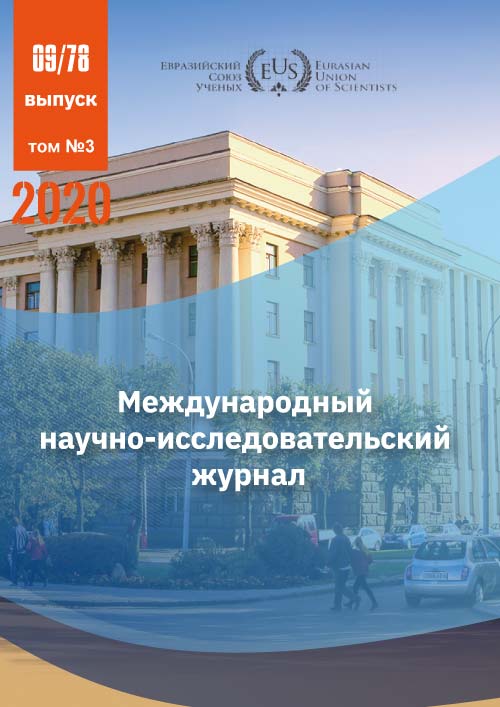EFFECT OF EPIPHYSIS ON REGULATION OF THE FUNCTIONAL STATE OF THE BLOOD COLLECTION AND FIBRINOLYSIS SYSTEM DURING THE DAY
Abstract
Purpose to investigate the role of the epiphysis in the regulation of blood aggregate state – we studied changes in blood clotting time, the content and activity of certain hemocoagulation factors in intact and epiphysectomized animals during the day
Method. In animals, the epiphysis was removed by a modified method of D. M. Aulov (1969). Influence of the epiphysis on the regulation of the functional state of the blood clotting system and fibrinolysis during the day – at 9, 12, 14, 18 hours. Blood clotting time was determined by the method of Lee and Uifyt, plasma tolerance to heparin by Sigg, recaltification time by Howell, thrombin time and free heparin by Sirmai, activity of prothrombin complex factors by Quick, platelet count by Danilin, fibrinogen and fibrinolytic activity by Kuznik.
28 Евразийский Союз Ученых (ЕСУ) #9(78), 2020
Result. The epiphysis is actively involved in the chain of neurohormonal regulation of the functional blood clotting system
Conclusions. The data of our research quite convincingly show that the epiphysis is actively involved in the chain of neurohormonal regulation of the blood clotting system in General, in the regulation of the daily rhythm, in particular. The epiphysis is included in a single mechanism of the epiphyseal-hypothalamic-pituitary-adrenal
system.
References
2. Мадатова В.М., Бабаева Р.Ю., Заманова Ф.Д. Динамика изменения факторов гемокоагуляции у эпифизэктомированных животных на фоне облучения// Scientific achievements of the third millennium. Part 1, San Francisco, 2018, pp.62-64
3.Мадатова В.М. и др. Влияние различных экспериментальных условий на гемокоагуляции в условиях физической нагрузки // Science and world. 2020, №5 (81). Vol.I, pp 34-36
4.Мадатова В.М. Изменение функционального состояния гемокоагуляции при ингибировании и активировании мелатонинобразовательной функции эпифиза//Вестник науки и образования №11(89). Часть 1. 2020. с.6-9
5.Мадатова В.М., Алиев А.Г., Гусейн Р.С.
Изменение тромбинового времени у эпифизэктомированных животных с одновременной дерецептацией обонятельной луковицы. Проблемы и перспективы современной науки. Сборник научных трудов. Вып.2, Томск, 2008, с.56-57.
CC BY-ND
A work licensed in this way allows the following:
1. The freedom to use and perform the work: The licensee must be allowed to make any use, private or public, of the work.
2. The freedom to study the work and apply the information: The licensee must be allowed to examine the work and to use the knowledge gained from the work in any way. The license may not, for example, restrict "reverse engineering."
2. The freedom to redistribute copies: Copies may be sold, swapped or given away for free, in the same form as the original.







